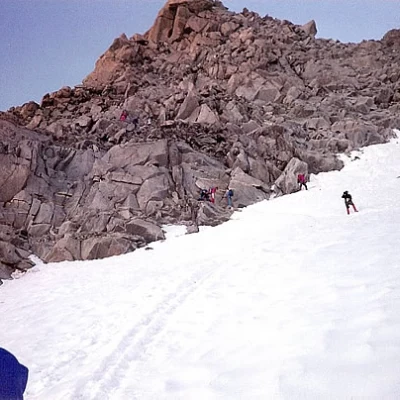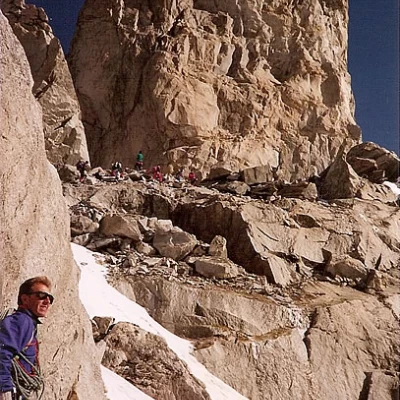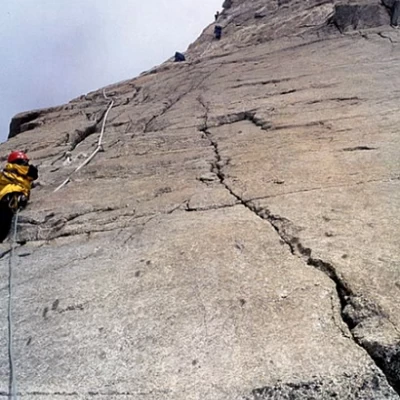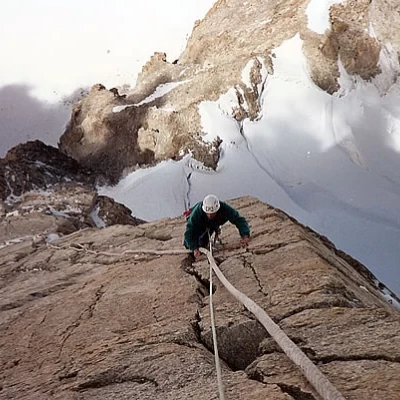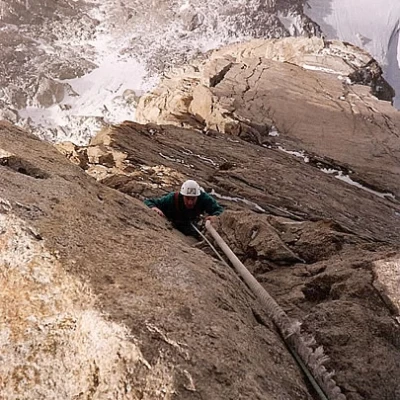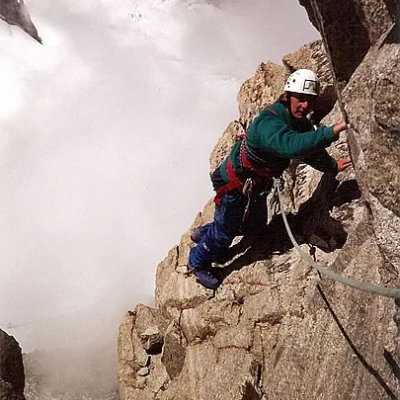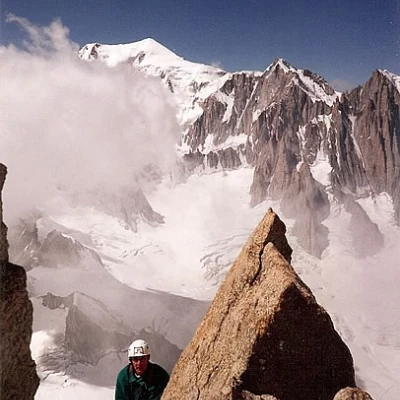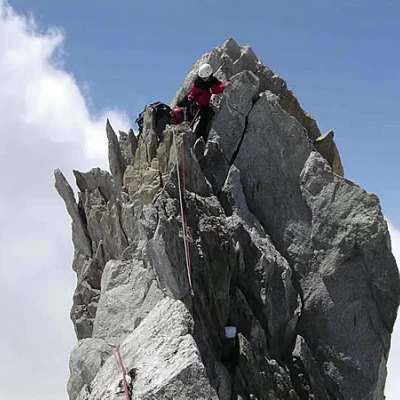Dente del Gigante, from Rifugio Torino
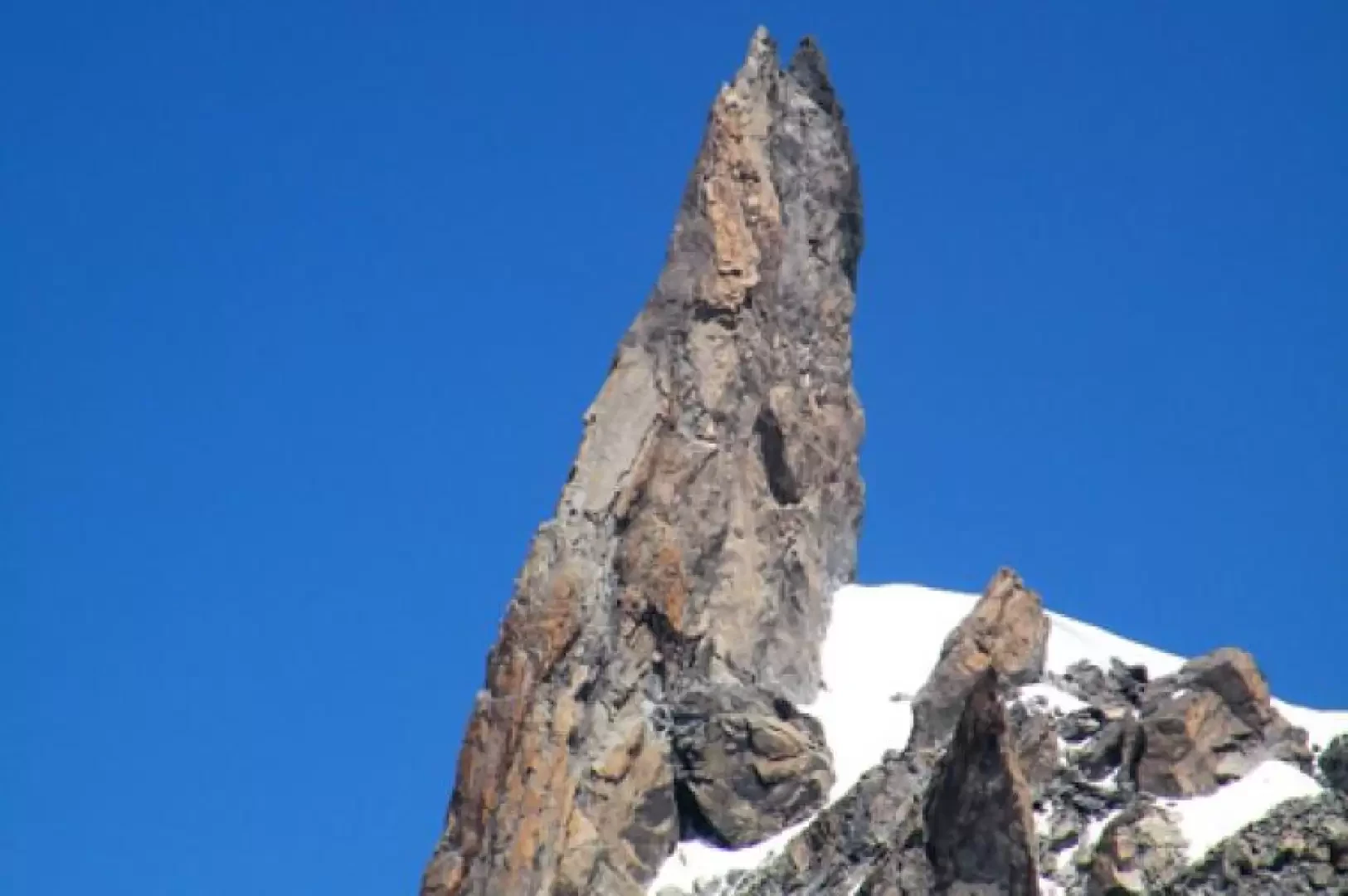
Access
Exit the motorway at Courmayeur, follow the signs for the Mont Blanc tunnel and then for Val Ferret. As soon as you leave the road that leads to the tunnel, at a hairpin bend, you will immediately find a large car park, or, if you continue with your car, you will find two more car parks at the cable car departure station and, with this, you will drive up to the Rifugio Torino.
.Introduction
A summit well-known to mountaineers and non-mountaineers alike for its slender shape, which is easily distinguishable even from the valley floor. The climb is also very popular because it can be done in a day, starting with the first runs of the cable car from Entréves up to the Torino refuge. The climb up the final monolith, just under 200m high, is considerably exposed but on excellent rock. The presence of fixed ropes should not be misleading: they reduce the technical difficulty a little, but they certainly take away from the pleasure of climbing at that altitude and in that environment, and in any case, given the fraying, it is better to trust your own.
Description
From the Rifugio Torino, descend slightly to the Glacier of the Giant and follow the evident traces that, to the east, head below the Aiguilles Marbrées and then climb north-east towards the Dente del Gigante. From the rocky strip at the head of the glacier, a secondary east-west ridge can be seen, ending with a high yellowish gendarme clearly visible from the glacier. After passing it on the right, you reach a snowy saddle and from here ascend the wide ridge towards the main (east) ridge: the route is easy but also exposed. Further up, you gradually enter an area of rocks and boulders and after bending to the left, follow the main ridge to an enormous boulder. Go around it, descending slightly on the Italian side, cross a short horizontal section and then climb up a steep snowy section that leads back to the ridge north of the boulder. Briefly follow the snowy ridge, bend to the left and thus reach a detrital or snowy clearing right at the base of the Dente: the 'Salle à Manger'. When you reach the western end of this clearing, start climbing up a characteristic granite slab that is inclined and detached from the wall. From its apex, go over a slab that is a few metres smooth (grade III) and traverse horizontally for about ten metres to the left until you reach a piton to enter a gully, steep but with good holds, which is well fissured. Climb up for about 30 m. and exit, to the left, on easy ledges that, after passing a step, lead to a comfortable but exposed terrace at the western edge of the Dente at the foot of a large slab: the "Burgener slab" (from this point the sections equipped with fixed ropes begin). This is overcome by means of a series of cracks for 45 m (a rather difficult and tiring section) and then one almost reaches the west edge; from here one overcomes the next smooth slab, taking advantage of the small holds at first and then relying only on the rope for 2 or 3 m, reaching a good belay point (from here the view of the north face is truly impressive). From the belay, traverse to the right along a series of slabs detached uphill for about twenty metres and reach a small belay point. A series of two vertical dihedrals lead laboriously to a small platform near a horizontal section of the ridge: follow this for a few metres and, after a short vertical wall (grade III), you reach a small terrace on the right. Now traverse a smooth slab a few metres to the right (exposed and delicate section) and climb up blocks in a dihedral to the south-west summit (Punta Sella). Descend via a small gully (possible abseil) to the notch below, formed by a ridge of sharp rock, and ascend a small wall (grade IV) to reach the highest and often crowded north-east peak, Punta Graham, where there is a small statue of the Madonna. The descent is all by abseiling with anchorages already in place.
.
